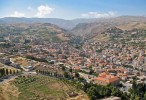It's time that the leisure industry looked at facility design in terms of functionality, rather than in terms of aesthetics or the 'wow' factor.
Put simply, the design of leisure facilities is inextricably linked to operations and therefore a direct contributor to profit or loss.
This is the conclusion of a host of spa consultants interviewed for an in-depth focus on spa design in the forthcoming July issue of Leisure Manager Middle East.
While their reasons are complicated, taking into account engineering, back of house and environmental concerns, as a regular spa user I am in total agreement.
My experiences at a spa have been significantly affected by my surroundings on more than one occasion.
And worryingly, it is the occasions when the layout of a spa has negatively impacted my experience that I remember far more vividly than when I have been overwhelmed by the beauty of a spa.
From tiptoeing suspiciously along corridors looking for the changing area after using a wet area to spending time hunting around for a rubbish bin, I often wonder whether these issues could be made easier by properly thought-out design.

Advertisement
Indeed as Dr Gerald Huber, regional director UAE/GCC, Schletterer Wellness and Spas observes, the flow of the spa should be logical and self-evident for the guest.
This would explain why I can't necessarily pinpoint why my positive experiences have been so good - the flow of the spa in these cases has most likely been so natural I haven't had to think about it.
The layout of a spa has also had the power to impact a spa experience even after a good treatment.
Being left to sit in a brightly lit 'relaxation' room with bare walls and nothing to read but car magazines, while distracted by the sound of children's voices outside, has quickly negated the effects of a relaxing facial massage in the past.
The key issue here is that as a spa-goer I am expecting a whole experience. It's not enough just to be in a stunning venue or have a healing treatment; the spa journey is what is important and that is intertwined with the flow of the spa.
This philosophy is applicable to many other leisure experiences. For example, my reaction to a thrilling roller coaster is going to be severely dampened if I have spent 90 minutes navigating a complicated queuing system beforehand.
Equally, the feeling I have after an invigorating swim is rapidly going to fade if am then forced to wait to use a limited number of showers on an unhygienic floor.
While the appearance of a leisure facility may attract customers in the first instance, it is experiences like these that will effect whether they return or not - and that's what owners need to be bear in mind when designing clubs and spas in the future.
Louise Oakley is the editor of Leisure Manager Middle East.
Design drama |
Next Top Stories
More LEISURE Stories









 Search our database of more than 2,700 industry companies
Search our database of more than 2,700 industry companies









